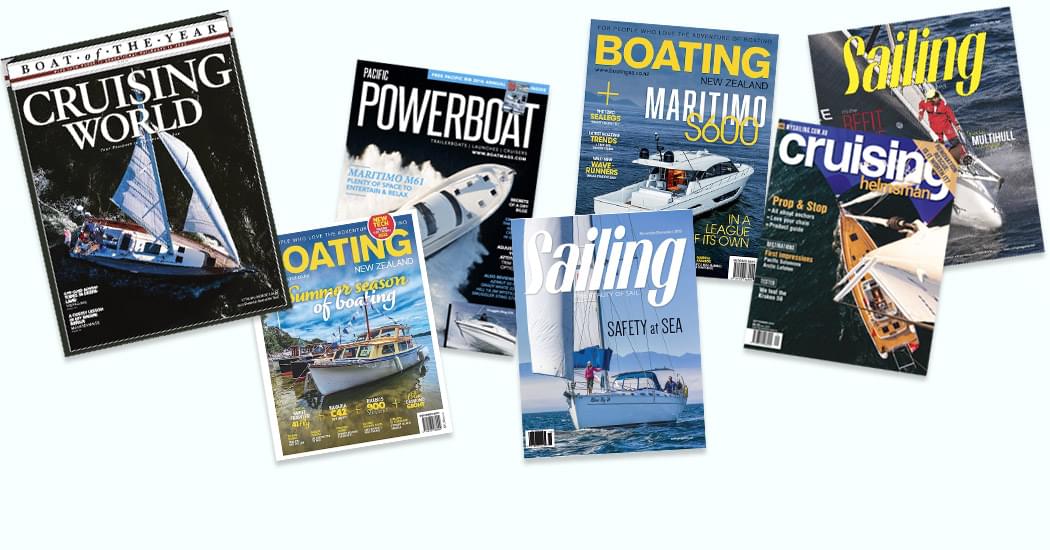
Dibley 40 'Fulcrum'
06 24 Topic : Yacht Reviews
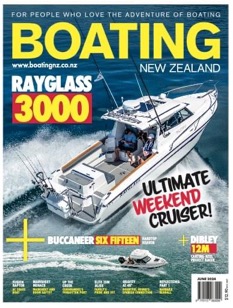
'Better than New'
Dibley 12m Canting Keeler
Boatbuilding, like any worthy endeavour, takes time. And, as anyone who has built a boat will know, it usually takes longer than expected.
Words by Sarah Ell.
Photography and Video by Roger Mill.
See the Dibley 40 'Fulcrum' here

But this 12m (39-foot) Kevin Dibley- designed canting-keeler has taken longer than most, with 30 years elapsing from the lines going on the plan to her bright-orange hull hitting the water in late 2023. And, again like many boatbuilding projects, this is not the end – rather, it’s another step on the journey which will keep her owners, Derek and Janine Grul, happily occupied for a few more years to come.
The boat was originally conceived by Dibley as an entry in a design competition run in the early 1990s by Yachting New Zealand, in the hope of stimulating racing in and around a 40 foot class. The design brief was for the yacht to be comfortable for a family to cruise on, but have a race-boat look and enough performance to attract serious sailors. It also needed to be offshore capable, and able to be built for around $400,000 (cheap by today’s standards). The competition was won by Brett Bakewell-White with his Z39, which went into production, but only a few boats were built and the class didn’t really take off.
Tauranga sailor Carl Smith, who already had a Dibley- designed 6.5m sportsboat called Stealth, liked the look of what Dibley had drawn and decided to take on building the design himself. He nicknamed the boat Widowmaker, but could only work part-time on the build and made slow progress. By the end of the 2000s the yacht was still only half-built. Over that time, Dibley and Smith experimented with the variables as technologies and trends changed: fixed, lifting, canting or lifting/canting keel (canting won the day), using carbon fibre for the chainplates and rudder stock (the hull is e-glass over a foam core), and an increasingly bigger rig.
Smith decided to move on to other projects, and decided to sell the largely complete hull and decks in 2017. Auckland-
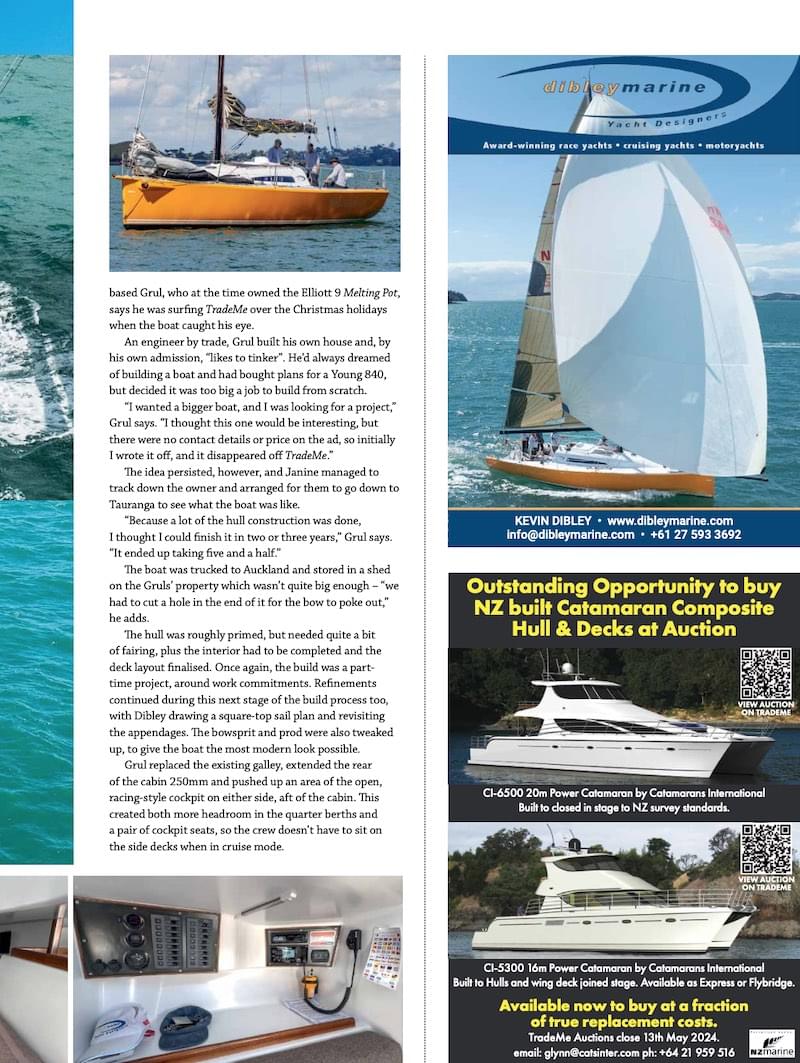
based Grul, who at the time owned the Elliott 9 Melting Pot, says he was surfing TradeMe over the Christmas holidays when the boat caught his eye.
An engineer by trade, Grul built his own house and, by his own admission, “likes to tinker”. He’d always dreamed of building a boat and had bought plans for a Young 840, but decided it was too big a job to build from scratch.
“I wanted a bigger boat, and I was looking for a project,” Grul says. “I thought this one would be interesting, but there were no contact details or price on the ad, so initially I wrote it off, and it disappeared off TradeMe.”
The idea persisted, however, and Janine managed to track down the owner and arranged for them to go down to Tauranga to see what the boat was like.
“Because a lot of the hull construction was done, I thought I could finish it in two or three years,” Grul says. “It ended up taking five and a half.”
The boat was trucked to Auckland and stored in a shed on the Gruls’ property which wasn’t quite big enough – “we had to cut a hole in the end of it for the bow to poke out,” he adds.
The hull was roughly primed, but needed quite a bit of fairing, plus the interior had to be completed and the deck layout finalised. Once again, the build was a part- time project, around work commitments. Refinements continued during this next stage of the build process too, with Dibley drawing a square-top sail plan and revisiting the appendages. The bowsprit and prod were also tweaked up, to give the boat the most modern look possible.
Grul replaced the existing galley, extended the rear of the cabin 250mm and pushed up an area of the open, racing-style cockpit on either side, aft of the cabin. This created both more headroom in the quarter berths and a pair of cockpit seats, so the crew doesn’t have to sit on
the side decks when in cruise mode.
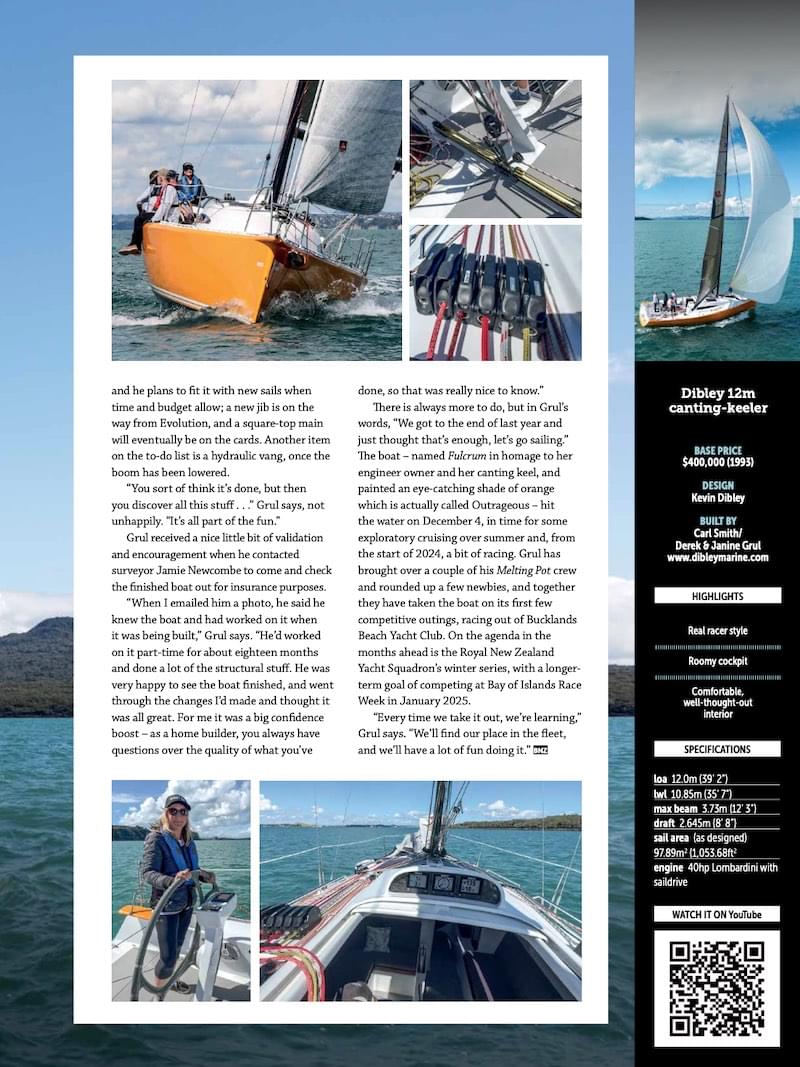
SAILING FULCRUM
We met up with the Fulcrum crew on a bright autumn day with just the right amount of breeze to have a great sail. She’s not hard to spot: there aren’t that many bright- orange 38-footers out there. Up close on a sparkling, sunny day she looks fantastic — fresh out of the shed and neatly finished.
The cockpit is open and spacious, raceboat-style, with a cool curved edge to the deck at the open transom. There’s a step down to a boarding platform at the back, which is also the attachment point for the running backstays. This platform and the cockpit itself are lined with durable grey non-skid.
The racing look is continued in the twin wheels, mounted on angled pedestals, which allows the skipper to steer from well outboard and have good visibility forward. The button controls for the canting keel are mounted here on the cockpit side, so you have to be a bit careful not to bump them with your leg and accidentally drop the keel back to the centre when going upwind (my bad). Nav screens and instruments are mounted onto the top of the pedestals.
The traveller runs across the cockpit in front of the wheels, and there are three pairs of winches on the cockpit sides: one set close by the helm for the main, a pair of primaries for jib and gennaker trimming further forward, and a pair on the cabintop for control lines. There’s plenty of room in the cockpit for the crew to move around, while the pair of seats that Grul has created don’t impinge on the roominess and usability of the cockpit – and make a good spot to sit or kneel on.
Up front, the boat is fitted with both a short fixed bowsprit for flying furling sails like a code zero (on the wish list) and a retractable prod for asymmetric downwind sails.
Sailing a boat like this, with running backstays, a canting keel, gennakers and all the rest makes for a busy time, and it’s certainly going to keep Grul and his crew occupied sorting out systems and getting the best out of her. We enjoyed our sail, getting the asymmetric up for a smooth ride downwind, and cranking up the canter for the upwind leg. It was great to be sailing something Kiwi-designed and -built, and we can see the boat has plenty of potential for her owners to explore.

The boat now has a neat and practical interior, with a small galley to port, with gas stove, a single sink and a cool carbon-fibre benchtop; two large quarterberths aft and a double berth in the bow; a comfy saloon in the centre, built around the wet box for the canting keel; and a head forward of the mast and canard.
The original owner/builder had installed a marinised Toyota car engine, but Grul replaced this with a 40hp Lombardini with a sail drive, necessitating a rebuild of the engine beds too. The hydraulic canting keel system also had to be installed.
The boat came with an aluminium mast and some second-hand sails: a Farr 40 main (with a pinhead), a headsail and an asymmetric spinnaker off the Welbourne 42 Wedgetail. To improve the boat’s performance without splashing too much cash, Grul opted to buy a used carbon spar and its rigging off Bakewell-White 40 Anarchy,
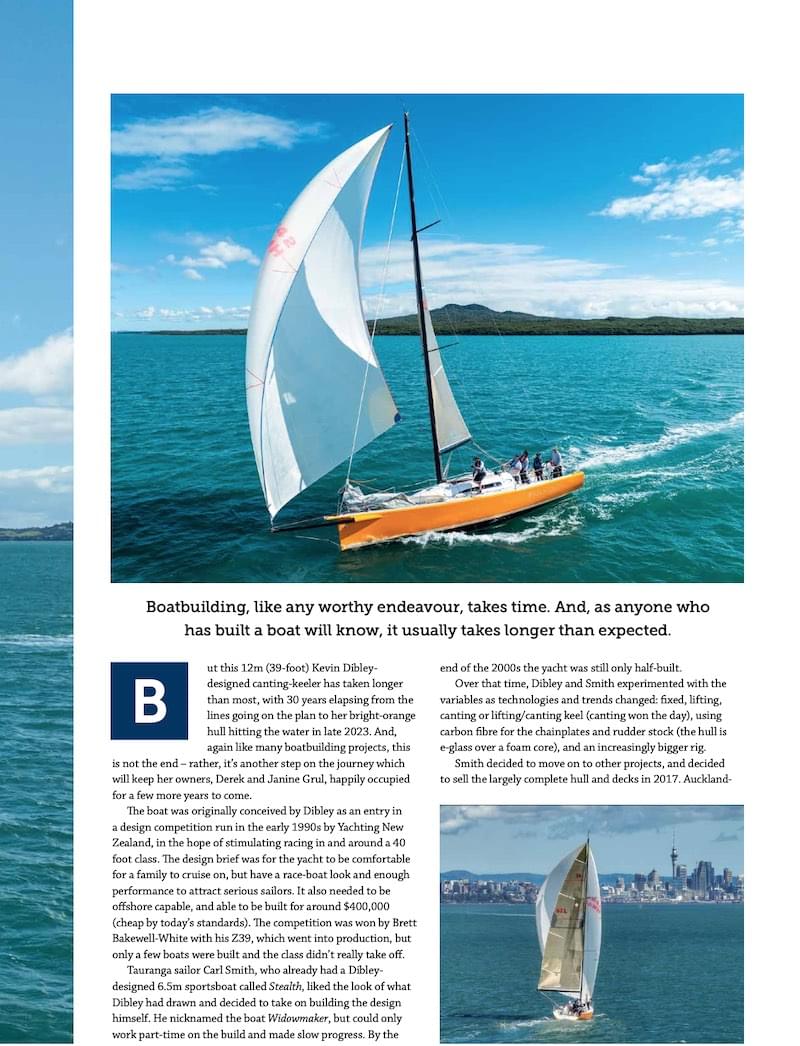
and he plans to fit it with new sails when time and budget allow; a new jib is on the way from Evolution, and a square-top main will eventually be on the cards. Another item on the to-do list is a hydraulic vang, once the boom has been lowered.
“You sort of think it’s done, but then you discover all this stuff . . .” Grul says, not unhappily. “It’s all part of the fun.”
Grul received a nice little bit of validation and encouragement when he contacted surveyor Jamie Newcombe to come and check the finished boat out for insurance purposes.
“When I emailed him a photo, he said he knew the boat and had worked on it when it was being built,” Grul says. “He’d worked on it part-time for about eighteen months and done a lot of the structural stuff. He was very happy to see the boat finished, and went through the changes I’d made and thought it was all great. For me it was a big confidence boost – as a home builder, you always have questions over the quality of what you’ve done, so that was really nice to know.” There is always more to do, but in Grul’s words, “We got to the end of last year and just thought that’s enough, let’s go sailing.” The boat – named Fulcrum in homage to her engineer owner and her canting keel, and painted an eye-catching shade of orange which is actually called Outrageous – hit the water on December 4, in time for some exploratory cruising over summer and, from the start of 2024, a bit of racing. Grul has brought over a couple of his Melting Pot crew and rounded up a few newbies, and together they have taken the boat on its first few competitive outings, racing out of Bucklands Beach Yacht Club. On the agenda in the months ahead is the Royal New Zealand Yacht Squadron’s winter series, with a longer- term goal of competing at Bay of Islands Race Week in January 2025.
“Every time we take it out, we’re learning,” Grul says.
“We’ll find our place in the fleet, and we’ll have a lot of fun doing it.

See the Dibley 40 'Fulcrum' here
